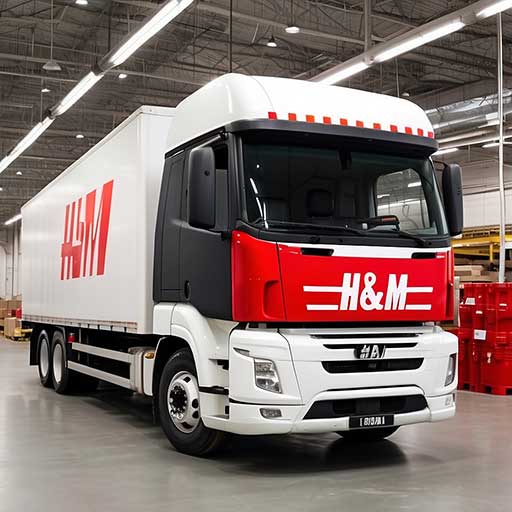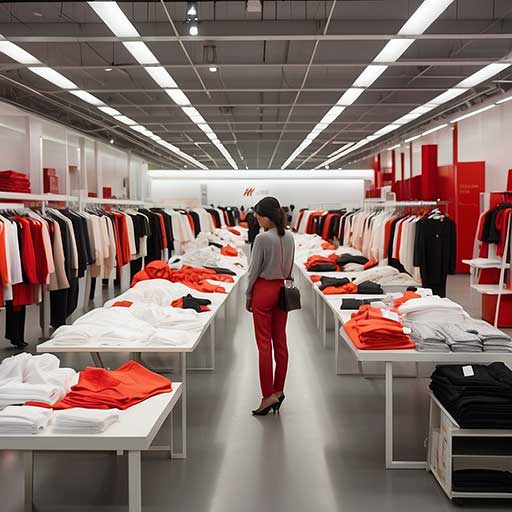Where are H&M Clothes Made?
H&M produces its clothing in countries all over the world. In total, it works with approximately 1,800 suppliers and manufacturers located in 55 countries around the globe. Its primary production areas are Bangladesh, China and India for apparel items such as jeans, t-shirts and sweaters.
H&M also sources some of its products from Turkey, Pakistan and other European countries like Portugal, Italy and Poland. Additionally, H&M has several factories that are owned by the company itself located in Vietnam, Morocco and Cambodia.
H&M is one of the world’s most popular and accessible fashion brands, and their clothing is produced in countries all over the globe. From Bangladesh to Ethiopia, H&M sources production from various factories in order to deliver affordable apparel that meets their high standards of quality. Additionally, they also use sustainable materials such as organic cotton, recycled polyesters and linen made from recycled wood pulp wherever possible.
This commitment to sustainability combined with their global network of suppliers makes H&M a leader in ethical production practices within the fashion industry.
Is H&M Made in Usa?

No, H&M is not made in the USA. The clothing retailer has stores all over the world, but its headquarters and main production plants are located in Europe. While there are some online orders that can be shipped to US addresses, most of its products are manufactured overseas.
This means that you may find items with “Made in USA” labels on them at H&M stores, but these will generally be limited to certain pieces like accessories or home goods rather than apparel.
What Country is H&M Made In?
H&M is a Swedish clothing retailer that was founded in 1947. The company is headquartered in Stockholm, Sweden and has more than 4,500 stores across 62 countries worldwide. H&M’s production centers are located mostly in Asia, which accounts for 80% of the company’s total production output.
In addition to this, there are also numerous factories located throughout Europe including Germany and Italy as well as smaller facilities scattered throughout other parts of the world such as South America. Overall, H&M is truly a global brand with its origin based firmly in Sweden.
Where Does the Clothes Store H&M Come From?

H&M, or Hennes & Mauritz AB, is a Swedish multinational clothing-retail company that was founded in 1947 by Erling Persson. The company began as a single women’s wear store in Västerås, Sweden and since then has grown to become one of the largest fashion retailers in the world with over 4,500 stores located across 62 countries. Over the years H&M has developed an approach to sustainability and social responsibility which has been recognized globally for its commitment to ethical business practices.
Where are H&M Sweaters Manufactured?
Many of H&M’s sweaters are manufactured in countries around the world, including China, India, Bangladesh and Turkey. The company has production facilities and offices located in over 30 countries to ensure that their garments meet their high standards for quality and sustainability. Their suppliers must comply with strict codes of conduct regarding working conditions, wages and environmental protection practices.
Additionally, H&M is committed to using only sustainable materials such as organic cotton or recycled polyester fibers whenever possible. As a result of these efforts, they have become one of the most respected names in fashion today.
How H&M’s Recycling Machines Make New Clothes From Used Apparel | World Wide Waste
H&M Logistics And Distribution

H&M is one of the most successful and renowned fashion companies in the world, and they owe a lot of their success to their efficient logistics and distribution system. H&M operates over 4,500 stores across 59 markets around the globe, relying on their well-established supply chain network for timely delivery of goods from factories to retail outlets. This extensive global reach means that H&M’s logistics and distribution team must be able to coordinate shipments between multiple countries with different regulations around transportation.
To ensure smooth deliveries, H&M has invested heavily in its IT capabilities, using sophisticated systems such as SAP EWM (Extended Warehouse Management) to track inventory levels and manage warehouse operations. The company also uses advanced analytics tools like predictive demand planning to forecast customer needs more accurately than ever before. By leveraging cutting-edge technologies like these, H&M continues to lead the way when it comes to delivering fast fashion at an unbeatable price point worldwide.
H&M Supplier List
H&M is one of the most popular clothing brands in the world, and their supply chain is highly regarded for its ethical practices. The company has a list of approved suppliers that are regularly audited to make sure they meet high standards of labor rights, environmental protection, safety and quality assurance. H&M works with over 1,800 factories from around the globe to produce their products.
H&M Manufacturer List
H&M has an extensive manufacturer list, with over 1,500 suppliers in more than 60 countries. The company works to ensure that all their suppliers adhere to the same high standards of safety and quality, as well as ethical labour practices. H&M also carries out regular audits at each production facility they work with, both on-site and remotely.
This ensures that all products are made safely and ethically throughout their entire production process.
H&M Supply Chain Issues

H&M, a popular clothing retailer, has recently faced several supply chain issues. In late 2020 and early 2021, the company was hit with multiple production and shipping delays that caused their inventory levels to drop significantly. Additionally, they were forced to increase prices due to rising costs of raw materials.
These challenges have been further complicated by the pandemic-related disruption in global trade networks. H&M is currently working on solutions in order to improve their supply chain and reduce disruptions going forward.
Conclusion
In conclusion, H&M clothes are made in over 50 countries around the world. These countries include Bangladesh, India, Cambodia and China. While many of their items are manufactured in Asia due to lower labor costs and better trade agreements there, some pieces are also made in Europe and North America.
The company strives to ensure ethical production practices by regularly inspecting its suppliers’ facilities for safety compliance and fair wages. As a result of this global reach, customers have access to fashionable clothing at affordable prices while supporting responsible business practices across the world.

Hi, Musette Beaulieu here. Being a full time housewife makes me a geek for washing and drying clothes. Who doesn’t love fresh smelled clothes? Carry on with me, I hope you get what you seek in this clothes drying journey.
